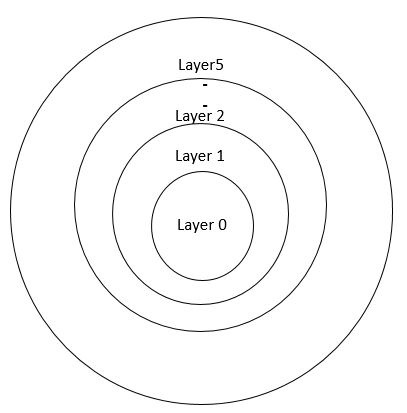
 Data Structure
Data Structure Networking
Networking RDBMS
RDBMS Operating System
Operating System Java
Java MS Excel
MS Excel iOS
iOS HTML
HTML CSS
CSS Android
Android Python
Python C Programming
C Programming C++
C++ C#
C# MongoDB
MongoDB MySQL
MySQL Javascript
Javascript PHP
PHP
- Selected Reading
- UPSC IAS Exams Notes
- Developer's Best Practices
- Questions and Answers
- Effective Resume Writing
- HR Interview Questions
- Computer Glossary
- Who is Who
What are layered structures and its benefits in OS?
The operating system can be broken into pieces that are smaller in size and this type of operating system is called MS-DOS, an UNIX OS and OS which is having greater control over the computer.
When a layered structure is used then we can divide the OS into different layers and the OS is broken into a number of layers, the bottom layer is layer 0 and highest layer is layer N and a user interface connects all layers with each other.
The different layers in a layered structure are as follows −
Layer 0 deals with the allocation of processors, it always switches between processes when interrupts occur or timers expire.
Layer 1 function is memory management. It allocated space for processes in main memory.
Layer 2 handled operator-process communication between each process and the operator console.
Layer 3 managing the I/O devices and buffering the information streams.
Layer 4 deals with the user programs.
In Layer 5, the system operator process was located.
The figure given below depicts the layered structure in an operating system −

Benefits
The benefits of using layered structure are as follows −
Different OS are able to reuse the functionality exposed by your layers.
We can distribute layers over multiple physical tiers. This can make a very good impact on your OS by improving performance (sometimes), scalability and fault tolerance.
The maintenance of the OS is easier because of the low coupling between layers.
Adding more functionality to the OS is made easier.
Layers make the OS more testable.
Building well formed layers makes the orientation in OS easier.
Having an OS not layered means that you have to deal with all security threats in one place which is very difficult.
Having an OS that is distributed to layers makes it much easier to design and implement.
Without a good deployment plan it is not trivial to distribute your layers over multiple physical tiers in distributed computing. You need to plan ahead your layers when you create a distributed OS.
Functions
The function of each layer is shown below −
| Layer | Function |
|---|---|
| 5 | The Operator |
| 4 | User programs |
| 3 | Input/Output management |
| 2 | Operator-process management |
| 1 | Memory and drum management |
| 0 | Processor allocation and multiprogramming |

